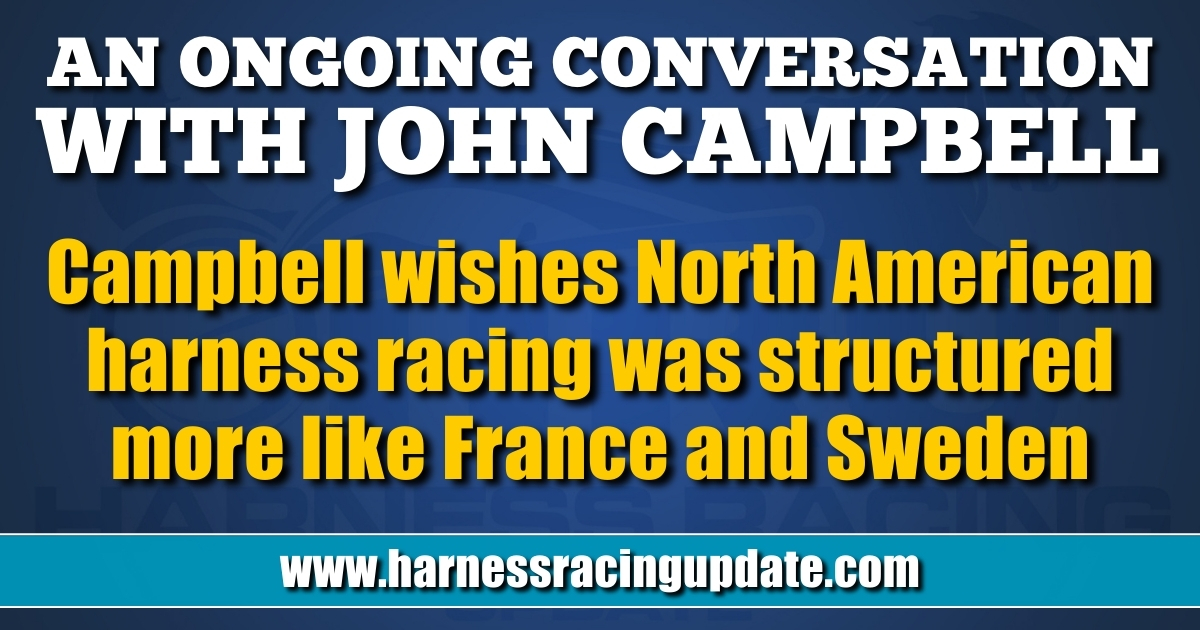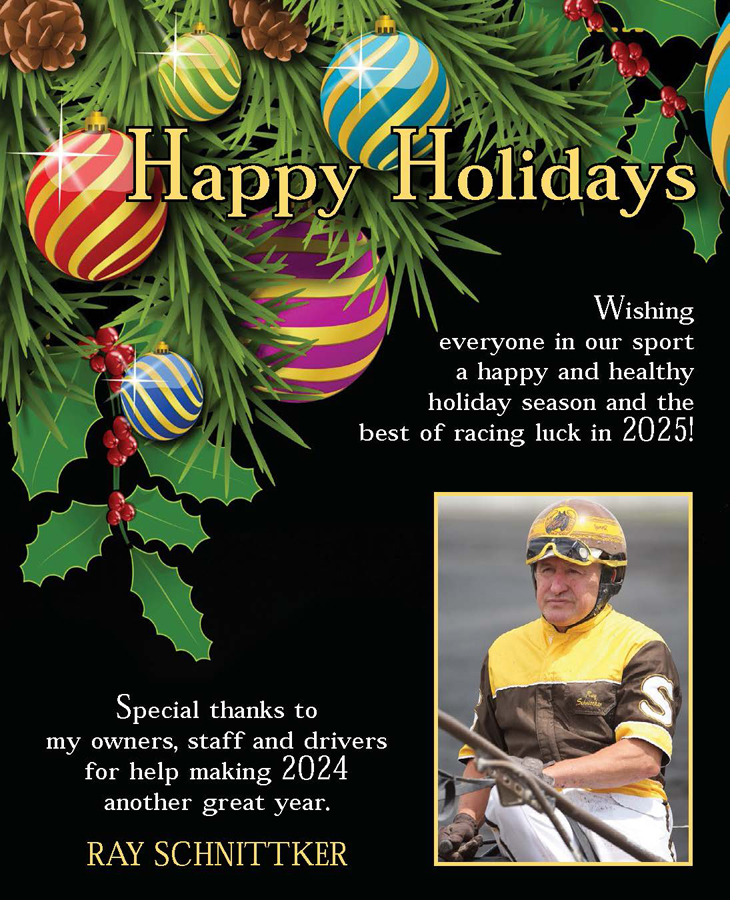

Campbell wishes North American harness racing was structured more like France and Sweden
by Dave Briggs
The day before jumping on a plane to Paris to attend the Prix d’Amerique, Hambletonian Society CEO John Campbell was asked what he wished North American harness racing could adopt from the Europeans.
It’s no surprise that Campbell said there is a lot to like about the fact that in France and Sweden one organization essentially controls everything — the rules, the medications, etc. After all, he has been working for many years to try to bring universal rules to North American harness racing.
Campbell said everything in French harness racing operates like NASCAR, which is a privately-owned company controlled by the family of founder Bill France, Sr.
“In France, the betting corporation [the Pari Mutuel Urbain (PMU)] is an arm of LeTROT, which organizes all the races and governs all the rules,” Campbell said. “So, you’ve got one organization, rightly or wrongly, making all the decisions and you don’t have all the fragmentation and piecemeal decisions that we have here with our different states and provinces.
“They make all the decisions for French racing and they’ve done a tremendous job building handle, building brands. PMU is the betting arm of LeTROT and they are a worldwide brand for betting. So, it’s much different when you have that one organization and they are making the decisions.”
Having the PMU operating as a separate entity under one house is key, Campbell said.
“And the funding mechanisms to support all the racing in France is under that same umbrella,” he said. “They support races that are out in the country, what we would call smaller meets. They support and subsidize those from the money they make from Vincennes. So, there’s popularity and top horses racing throughout the country for decent purses.”
It’s similar in Sweden, Campbell said. The national betting company, ATG, is 91 per cent owned by Svensk Travsport (the Swedish Trotting Association).
Unlike North America, “there are fewer people that you have to worry about,” Campbell said. “You only need a few chairs in the room, not 25.”
Another plus about European races? They start when they say they are going to start. Campbell said he wishes North American races would start on post time and not drag many minutes at 0 minutes to post.
“Certainly [European races] go on post time and that’s a big plus, but the [North American] racetracks and the handicappers have created this system with drag, so here we are and we’re stuck with it until there’s a unified effort by all the tracks to go back to go on post time,” Campbell said.
He said it’s a major advantage that in Sweden and France harness racing is a national sport.
“People all over the country are aware of trotting races in both Sweden and France,” he said. “We don’t have that. Obviously, the Swedes tying their lottery to their races with the V75 and all that has made the exposure for harness racing tremendous in Sweden, but it’s the same in France. It’s a national sport.”
As for what he loves about Vincennes, Campbell said his favorite part is going into the paddock — which is right beside the grandstand — and seeing the horses and old friends.
“Getting to chat with J.P. Dubois is always a highlight for me,” Campbell said. “He’s always in the paddock. There’s a language barrier there, but we have no problem with it. So, to stop and have a glass of champagne in the paddock with J.P. Dubois, it doesn’t get a whole lot better than that.”
Though Dubois doesn’t know much English and Campbell doesn’t know much French, they share the universal language of horses.
“The language is not that much of a hindrance,” Campbell said. “It’s always a pleasure to get to stop by and visit with him.
“What a career he’s had. He’s just done everything in the sport on two continents, it’s pretty amazing. He’s just a personable, humble, gentleman and it’s a highlight to get to talk to him every year.”
Campbell said one of the few regrets of his career was never getting to drive at Vincennes.
“I was invited to [drive there] a couple times and I just didn’t go,” he said. “The first day I was ever there… I went into the washroom and I was recognized before I got out of there.
“Then I walked out and I looked at that track and I looked at the crowd and everything and I said to myself, ‘I made a mistake not coming here to drive at least once.’ It was just that impressive to look at the track and the whole facility the first time I was exposed to it.
“Now, I always said, with that [turn-and-go] start that they do for the Prix d’Amerique, I would never want to drive in the Prix d’Amerique with that start with a horse that had a chance because there’s a knack to it and you’d have to do it 15 or 20 times to get onto it and make sure you did it right. But if the horse was 40- or 50-1 and didn’t have much of a chance, I would have loved to have driven in the Prix d’Amerique.
“I did have a chance or two, but I didn’t and I knew I made a mistake as soon as I took a look at that facility and walked out onto the track apron.”















